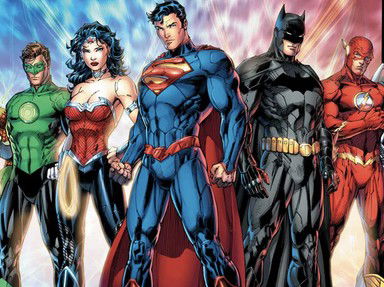Quiz Answer Key and Fun Facts
1. What "sword and sorcery" character did Bernie Wrightson illustrate for DC in "Showcase" magazine?
2. Who was Hal Jordan's girlfriend in "Green Lantern", and what was her evil alter ego?
3. Which artist, new to DC at the time, was promoted slyly in the Green Lantern/Green Arrow story concerning the Pavlovian housing community made by Black Hand in 1971?
4. What tacky comic book publisher was the first place that Neal Adams, John Byrne and Steve Ditko worked before breaking big at Marvel and DC?
5. Who initially drew "The Justice League of America" in its earliest stages?
6. Who was the red faced female Green Lantern that Hal Jordan always ran into when the Corp had a meeting on Oa?
7. Can you name all of the silver age Supergirl's pets?
8. Who was Linda Lee Danver's rival when she worked for the TV crew in Adventure Comics in the 70s?
9. How did The Atom travel through time?
10. What were the names of the principals in "The Dodo and the Frog"?
11. Which two famous Paramount-contracted comic actors had eponymous comics all to themselves for quite a while at DC?
12. Which Legionnaire was committed to a mental institution for a good portion of his existence in the Legion's own title?
13. In a surprise development, who turned out to be Chameleon Boy's father?
14. What was the very first issue of "Green Lantern-Green Arrow"?
15. What was the true nature of Mr. Mind, a recurring Captain Marvel/Shazam villain?
Source: Author
Photoscribe
This quiz was reviewed by FunTrivia editor
linkan before going online.
Any errors found in FunTrivia content are routinely corrected through our feedback system.
